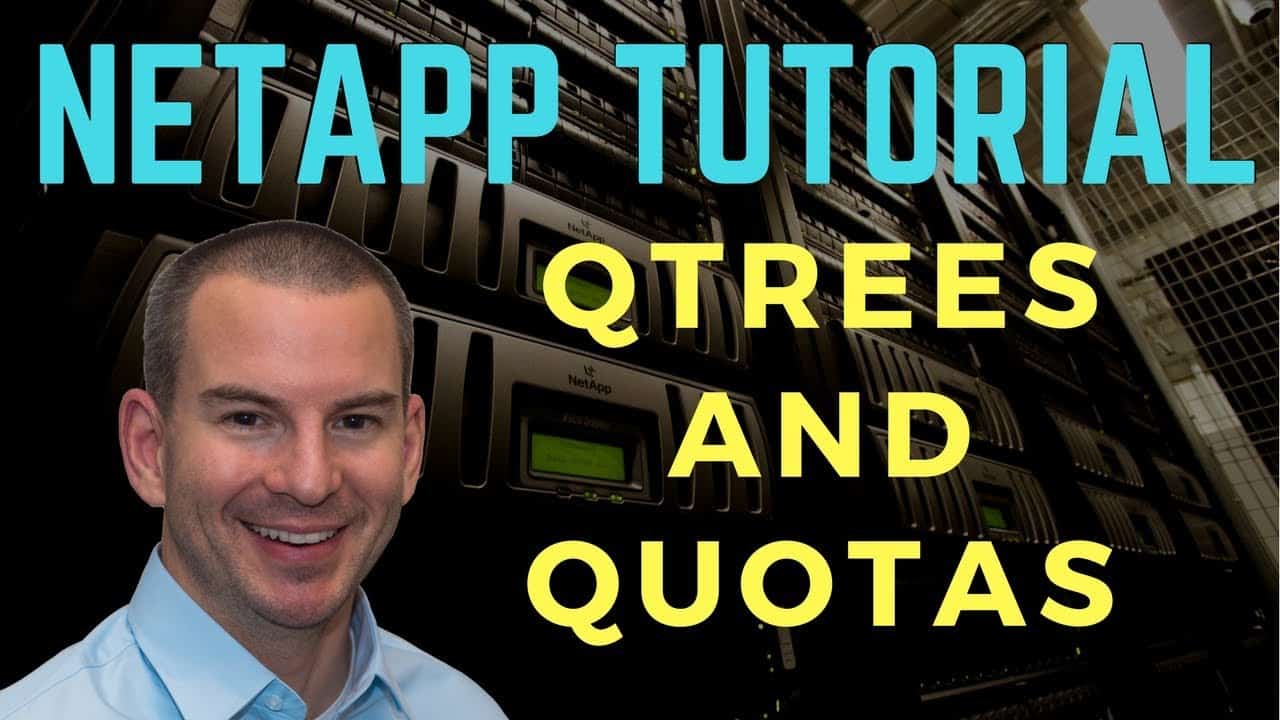
In this NetApp training tutorial, I will cover qtrees and quotas. Scroll down for the video and also text tutorial.
NetApp Qtrees and Quotas Video Tutorial

Kyung Pastino

I took Netapp ONTAP classroom training about a month ago and then watched your tutorials 3 times each. Your tutorials were much better than the class. I took the test last week and passed it. I don’t think I could have done that without your tutorials. Thank you so much!!!
Qtrees are an optional feature in the NetApp ONTAP software architecture. They can be created within volumes to segment those volumes into smaller segments. When you create a qtree, it appears as a directory in the volume to any clients who access that volume.
A common use of Qtrees is to configure and manage quotas – that’s where the ‘Q’ in qtrees comes from.
Soft and Hard Quotas
Quotas provide a way to track and/or restrict the disk space and number of files used by a user or group within a volume or qtree. They can also be used to control the total size of a qtree.
Soft quotas are used as a warning only, they send a notification to the storage administrator when specified thresholds are exceeded but do not prevent data from being written.
Hard quotas enforce the limit, they prevent a write operation from succeeding which would exceed a specified threshold.
Soft and hard quotas can be used independently or in combination with each other. When used in combination, the administrator will get a soft warning first when space used reaches a certain level and then a hard limit is enforced at a higher level.
NetApp Volume vs Qtree Quotas
Quotas can be configured at either the volume or the qtree level. You can get more granular when configuring them at the qtree level.
If you want to configure quotas on a lot of folders, you probably don't want to create a separate volume for each of them. Another consideration is that snapshots, deduplication, and replication are configured at the volume level. It's easiest and most efficient to have multiple qtrees within your volumes to manage your quotas.
Quota Notifications
Quota notifications are used to give the storage administrator a warning when the capacity threshold has been reached. These are sent to the Event Management Systems so they show up in the logs and they can also configured as SNMP traps. Notifications will be sent in the following cases:
- A user tries to write data that would exceed the hard quota limit
- When a soft quota is exceeded
- When a soft quota is no longer exceeded
Other Qtree Use Cases
Security style and CIFS Oplock settings are configured at the volume level. Qtrees will inherit the settings from the volume they are in by default, but the settings can also be overridden at the qtree level.
Common Internet File System (CIFS) opportunistic locks are used for client side caching. For an application that is not compatible with CIFS Oplocks, create a qtree in the volume and disable CIFS Oplocks at the qtree level. This way you don’t need to create a separate dedicated volume for that application.
Additional Resources
Commands for Managing and Configuring Qtrees: https://docs.netapp.com/us-en/ontap/volumes/commands-manage-qtrees-reference.html
Manage Resources Using Quotas: https://docs.netapp.com/us-en/ontap/concept_quotas_overview.html
Want to practice NetApp qtrees and quotas on your laptop? Download my free step-by-step guide 'How to Build a NetApp ONTAP Lab for Free'
Click Here to get my 'NetApp ONTAP 9 Storage Complete' training course.